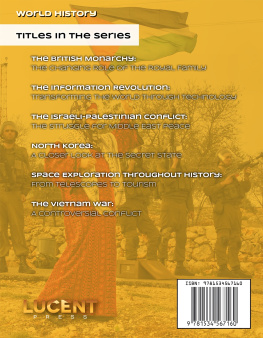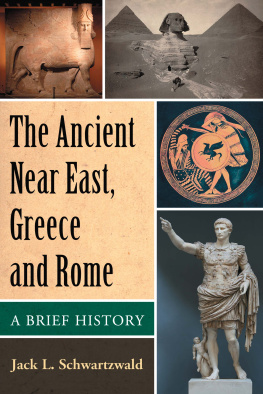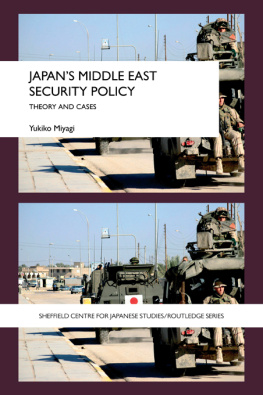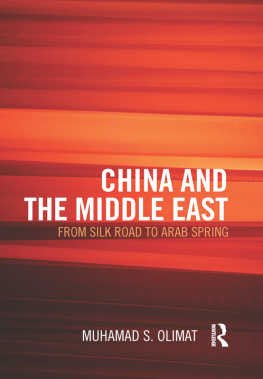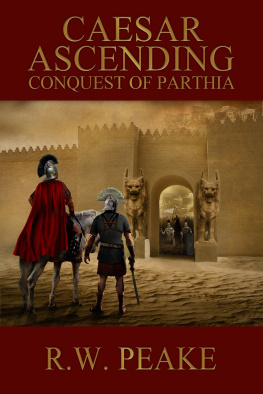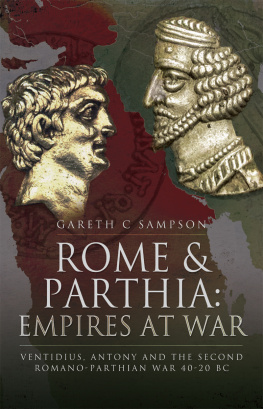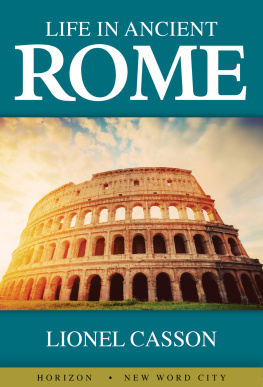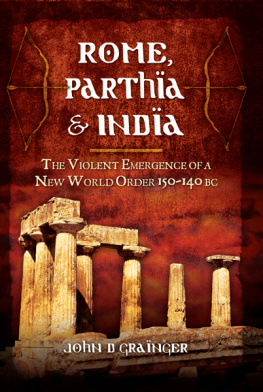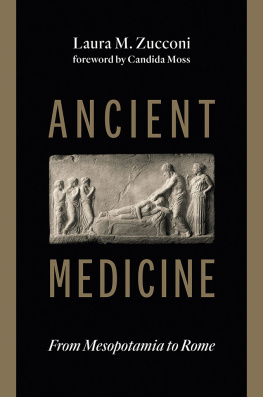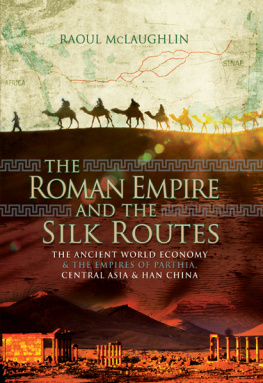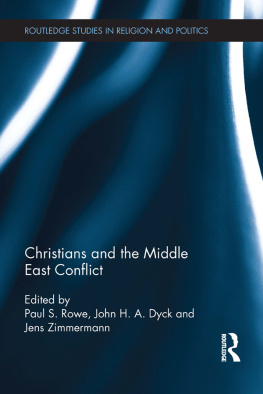Contents
Landmarks

Rome, Parthia, and the Politics of Peace
This volume offers an informed survey of the problematic relationship between the ancient empires of Rome and Parthia from c. 96/95 BCE to 224 CE. Schlude explores the rhythms of this relationship and invites its readers to reconsider the past and our relationship with it.
Some have looked to this confrontation to help explain the roots of the long-lived conflict between the West and the Middle East. It is a reading symptomatic of most scholarship on the subject, which emphasizes fundamental incompatibility and bellicosity in RomanParthian relations. Rather than focusing on the relationship as a series of conflicts, Rome, Parthia, and the Politics of Peace responds to this common misconception by highlighting instead the more cooperative elements in the relationship and shows how a reconciliation of these two perspectives is possible. There was, in fact, a cyclical pattern in the RomanParthian interaction, where a reality of peace and collaboration became overshadowed by images of aggressive posturing projected by powerful Roman statesmen and emperors for a domestic population conditioned to expect conflict. The result was the eventual realization of these images by later Roman opportunists who, unsatisfied with imagined war, sought active conflict with Parthia.
Rome, Parthia, and the Politics of Peace is a fascinating new study of these two superpowers that will be of interest not only to students of Rome and the Near East but also to anyone with an interest in diplomatic relations and conflict in the ancient world and today.
Jason M. Schlude is Associate Professor of Classics and Chair of the Department of Languages and Cultures at the College of Saint Benedict and Saint Johns University, Collegeville, Minnesota, USA. A former Getty Scholar at the Getty Research Institute and Villa, he is a specialist on the Roman Near East; has published on RomanParthian relations in journals including Latomus, Athenaeum, and Anabasis; and is coeditor of Arsacids, Romans, and Local Elites: Cross-Cultural Interactions of the Parthian Empire (2017).
Routledge Studies in Ancient History
Titles include:
The Popes and the Church of Rome in Late Antiquity
John Moorhead
The Plight of Rome in the Fifth Century AD
Mark Merrony
Geopolitics in Late Antiquity
The Fate of Superpowers from China to Rome
Hyun Jin Kim
Image and Reality of Roman Imperial War in the Third Century AD
The Impact of War
Lukas de Blois
Sallusts Histories and Triumviral Historiography
Confronting the End of History
Jennifer Gerrish
A History of the Pyrrhic War
Patrick Alan Kent
Rome, Parthia, and the Politics of Peace
The Origins of War in the Ancient Middle East
Jason M. Schlude
www.routledge.com/classicalstudies/series/RSANHIST
Rome, Parthia, and the Politics of Peace
The Origins of War in the Ancient Middle East
Jason M. Schlude

First published 2020
by Routledge
2 Park Square, Milton Park, Abingdon, Oxon OX14 4RN
and by Routledge
52 Vanderbilt Avenue, New York, NY 10017
Routledge is an imprint of the Taylor & Francis Group, an informa business
2020 Jason M. Schlude
The right of Jason M. Schlude to be identified as author of this work has been asserted by them in accordance with sections 77 and 78 of the Copyright, Designs and Patents Act 1988.
All rights reserved. No part of this book may be reprinted or reproduced or utilised in any form or by any electronic, mechanical, or other means, now known or hereafter invented, including photocopying and recording, or in any information storage or retrieval system, without permission in writing from the publishers.
Trademark notice: Product or corporate names may be trademarks or registered trademarks, and are used only for identification and explanation without intent to infringe.
British Library Cataloguing-in-Publication Data
A catalogue record for this book is available from the British Library
Library of Congress Cataloging-in-Publication Data
A catalog record has been requested for this book
ISBN: 978-0-815-35370-6 (hbk)
ISBN: 978-1-351-13571-9 (ebk)
Typeset in Sabon
by codeMantra
For Kat, Hen, and Gus,
with love and gratitude
Maps
)
)
Figures
)
)
)
)
)
)
)
)
This book comes of twelve years of research and writing on the relationship between the ancient Roman and Parthian empires. It began as my dissertation in the Graduate Group in Ancient History and Mediterranean Archaeology at the University of California, Berkeley in 20072009, and then entered a long period of revision and expansion before this publication. Such a long gestation has deepened my debt to those who have supported its writing.
My champions at Berkeley were several: Anthony Bulloch, Crawford Greenewalt, Christopher Hallett, Robert Knapp, Trevor Murphy, Carlos Norea, Martin Schwartz, and Andrew Stewart. I am grateful to each of them. Most important was and is Erich Gruen, who supervised the dissertation and has remained pivotal in the manuscripts development since that time. He reviewed the full draft at an advanced stage and provided crucial feedback, leading me to clarify and sharpen the argument at many points. Beyond the book, his teaching and friendship have enriched my life. It is not an exaggeration to say that my world would be unrecognizable without him. The debt cannot be repaidand I am happy to live with it.
My conversation partners for Parthian history have been many. In addition to Erich Gruen and Martin Schwartz, I wish to thank Bjrn Anderson, Matthew Canepa, Peter Edwell, Kenneth Jones, Jeffrey Lerner, Jake Nabel, Marek Olbrycht, and Andrew Overman. In particular, Rahim Shayegan and Benjamin Rubin have given me many opportunities to work on the subject and challenged me to engage with an ever-widening corpus of evidence. They remain two of the sharpest and most generous scholars with whom I have had the privilege to work.
I finished drafting the manuscript while on a research residency as a Getty Scholar at the Getty Research Institute and Getty Museum in Spring 2019. I could not imagine a better setting for the completion of this phase of the project. The resources available to me thereand the skill and good cheer with which the Getty staff offered themwere remarkable. Special thanks must go to Rose Campbell, Thisbe Gensler, Kenneth Lapatin, Alexa Sekyra, and Jeffrey Spier. The manuscript was improved by exchanges with my fellow scholars at the Getty Villa: Zsuzsanna Gulcsi, Kathleen Lynch, Robert Rollinger, and Antigoni Zournatzi. The list of other scholars at the Getty who broadened my intellectual horizons is too lengthy to recount here. I trust they each know how much I enjoyed and appreciated our time together. I also must thank my colleagues at the Omrit Settlement Excavation Project in Israel (Jennifer Gates-Foster, Michael Nelson, Benjamin Rubin, and Daniel Schowalter) who increased their workload to allow me to accept the research residency and complete this book.


